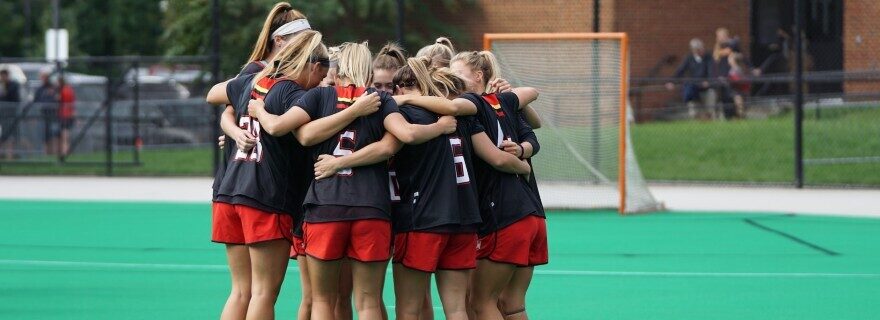Stop stereotyping ‘girls with a migration background’
In sport policy research and media reports, culture, ethnicity and religion are constantly framed as contradictory to sport participation. Jasmijn Rana and Kathrine van den Bogert argue that only when we take sexism and racism in recreational sports and exercise seriously, we can counter unequal sport participation.
‘Bi-cultural teenage girls don't want male onlookers' one Dutch national newspaper (Trouw) reported recently. Based on one policy research report, the newspaper article paints a one-sided picture of a diverse group of recreational athletes. It emphasizes the contradiction between sport and migration background that is characteristic of media attention to this topic, but by no means reflecting the findings of ethnographic research. Our research projects show that if we listen to these girls themselves and take a closer look at exclusion mechanisms in sports, a completely different picture emerges.
Repeating a one-sided story
Time and again policy research and media focus on the alleged contradiction between migration background (and Islam) and sport. Our research shows that teenage girls usually do not experience such contradiction themselves. A study among Moroccan-Dutch girls who play football shows that for many of them religion is not an obstacle at all. Moreover, many express that they also like to play football against boys: there is nothing more fun than defeating them. Ethnographic research on 'women-only' kickboxing shows religion to be a basis for sports experiences, rather than a contradictory phenomenon. Besides, in this particular branch of sport many non-Muslim women also appreciate sports without male onlookers, as is apparent from the broad popularity of ladies-only kickboxing.
It is mainly policy studies and media reports that evoke the contradiction between sports and religion, thereby maintaining the stereotype of non-sporting teenage girls with a migration background. For example, in the newspaper article in Trouw Laura Butselaar of the Knowledge Center for Sport and Physical Activity in The Netherlands draws major conclusions about this topic, such as “especially in Muslim families, we see that girls up to the age of 12 can still exercise freely, but it becomes more complicated when they develop a female body”. However, these conclusions are based on eleven interviews and two focus groups; a very small sample that cannot justify these statements. It is often impossible to draw general conclusions based on small-scale qualitative research, a limitation that necessarily also applies to our own research. Yet in this recent article, much like other media attention to the topic, the contradiction between sports and religion is presented as a new discovery, even though other research has shown for years that this is only one side of the story.
Stigmatizing categories
The persistent focus on culture and religion of much sport policy research presents 'migration background' and Islam as the counterparts of a modern, emancipated sporting life. We suggest that this very representation creates the inequalities that policy makers claim they want to combat. For example, Butselaar states that “segregated sport activities may not be what we want in the Netherlands”. In doing so, she ignores the fact that almost all sports in the Netherlands are organized separately for men and women. Only when it comes to girls with a migration background does culture suddenly become a factor of concern, and supposedly the cause of gender segregation. But it needs to be noted that the girls and young women that are the focus of such discourses were often born and raised in the Netherlands. Clearly, they bring as much culture to the sport association or club as anyone else. Calling a group 'bi-cultural' and emphasizing that they exercise less does nothing to improve the possibilities for sports participation. Instead, it reproduces this group as the eternal “other”, by keeping to signal that they never fully resemble the majority.
Exclusion mechanisms
Apparently, for many teenage girls, even without a migration background, the sports club is not the place where they feel safe and at ease. Pointing to the 'only' 40 percent of girls with a migration background who have a sports membership, shows a limited view on 'sports and physical activity'. Our research shows that many girls simply exercise on playgrounds and public squares in their neighbourhood and run in city parks. This sport participation is excluded from studies where membership of a club is the starting point.
Instead of taking sports club membership as a criterion for participation and looking for the problem of low membership numbers in 'culture' and religion, it is time to let go of such prejudices and really focus on the experiences of the girls themselves. If we want to understand why they do not have a sports membership, we will have to examine the exclusion mechanisms of sports associations and clubs. Only when we take sexism and racism (including Islamophobia) in recreational sports and physical activity seriously will we tackle the problem of unequal sports participation.
This blog post is a translated and edited version of a Dutch-language op-ed published in Trouw on 10 February 2023 "Cultuur en religie houden tienermeiden zelf niet af van sporten".
Photo note:
Segregated sports are deemed a problem in The Netherlands when it concerns non-white citizens, but is seldom criticized when it concerns white, upper-class sports such as field hockey.




0 Comments
Add a comment